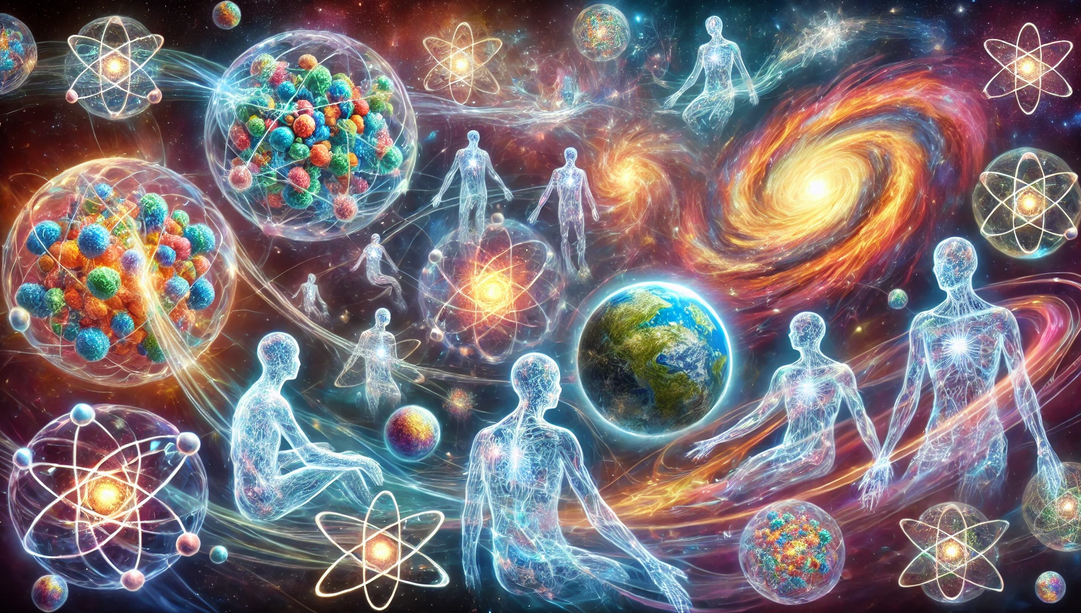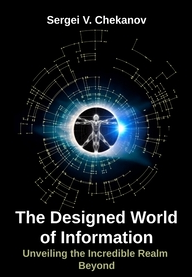Have we misunderstood the very nature of existence?
December 24, 2024 - Reading time: 8 minutes

Materialists believe that this world exists independently of us. It consists of atoms, molecules, planets, stars, and galaxies. It just happens that there are billions of humans, who, like other animals, are seen as biological robots. They interact with material objects and one another, moving from place to place. Atop their bodies are computational elements - their brains - which have evolved through natural evolutionary processes as tools for survival. These beings store information within their interconnected cells. When they die, the structured cells that hold the memories of life disappear entirely. New organisms are then born, continuing the biological cycle of reproduction and survival.
But what if this view of the world is completely wrong? What if everything you thought you knew about life and death does not follow this materialistic concept?
It's not a stretch of the imagination to consider that the world might not exist independently of us. Instead, the world is here only in relation to someone's perception of it. If no one perceives the world, who or what is asserting its existence at all?
When we say, "The Moon exists", we implicitly assume two things: that there is a Moon and that someone perceives it. If no one perceives the Moon, we cannot even pose the question, "Does the Moon exist"? Materialists, however, believe that things can exist independently of perception. According to this view, the Universe can exist even without a single living being to perceive it. In some sense, materialists assume the existence of an abstract, God-like entity, outside the Universe, that could declare the "existence" of things without requiring perception by conscious souls.
You may have encountered the idea that the Universe is merely an infinite realm of potential possibilities. According to this perspective, it is our consciousness that observes and, in doing so, brings the world into existence. The Universe requires observations to manifest. Without an observer, there are no atoms, molecules, or galaxies. There is no shape or structure. Without consciousness, the Universe would remain an infinite sea of probabilistic possibilities, waiting for a conscious being, like us, to bring it into focus.
What if the Universe relies on you to exist?
The famous physicist John Wheeler posed a radical idea that the Universe doesn't simply exist on its own. It requires you to observe it. Wheeler called this the participatory-anthropic principle, suggesting that reality itself is constructed from a sea of potential possibilities. According to Wheeler, consciousness acts like a sculptor, shaping space, time, and objects from the foamy abstract probabilities. He famously asserted that we are participants in bringing the Universe into existence.
This perspective aligns closely with philosophical teachings that embrace idealism as a core principle of existence. Many religions, such as Buddhism and Hinduism, also point to this possibility, emphasizing the interconnectedness of consciousness and reality. It aligns with the principle of mentalism that states that everything we perceive is a projection of a universal consciousness.
But this idea isn't just philosophical speculation - it's rooted in science, specifically quantum mechanics. In the quantum realm, particles exist in a state of probabilities, represented as an abstract "cloud" of potential outcomes. This probabilistic foam of potentials is the true fabric of the world. When observed, these immaterial probabilities collapse into a single, definitive state, forming "particles" with measurable properties that can organize into the solid structures we recognize as atoms and matter.
One of the most famous experiments in physics, the so-called double-slit experiment, provides profound insights into the role of observation in shaping reality. In this experiment, particles of light, or photons, are shot through two slits toward a screen. When unobserved, the photons behave like waves, creating an interference pattern on the screen. However, when a measuring device is used to determine which slit the photons pass through, they behave like particles, and the interference pattern disappears. This remarkable result demonstrates that the very act of observation fundamentally alters how reality manifests itself.
Some may argue that quantum mechanics doesn't apply to large-scale objects like us. They contend that the strangeness of microscopic particles - such as wave-particle duality - is merely a consequence of the way we acquire knowledge about them. Measuring tiny particle-waves involves interacting with them, which inherently disturbs their natural, wavy probabilistic state. For larger-scale objects, such disturbances don't occur, so this enigmatic effect of "observer" is meaningless.
However, emerging evidence suggests that the world of possibilities is indeed shaped by our consciousness, even at large scales. The book "The Designed World of Information: Unveiling the Incredible Realm Beyond" [1] presents compelling arguments that various coincidences in human lives cannot be explained by randomness or social behavior alone. If one were to attribute these coincidences purely to chance, they would need to assume the existence of 10^(11) universes like ours [1], where all events occur randomly or through social behavior. In such a multiverse, our universe would be extraordinarily unique in hosting the remarkable coincidences we can observe. This suggests that consciousness plays a vital role in shaping the reality we experience.
But why should our Universe be special and filled with remarkable coincidences? Out of 10^(11) possible similar worlds, we could just as easily exist in one devoid of such coincidences, where randomness and social behavior are the only mechanisms for coincidental events. These coincidences are not a principal condition for our existence, meaning the usual anthropic principle cannot be invoked to explain them.
Yet, this is not the reality we inhabit. We live in a world marked by extraordinary coincidences. These phenomena are explored in detail in The Designed World of Information: Unveiling the Incredible Realm Beyond [1], with specific examples provided in [2]. The existence of such coincidences suggests that there must be an underlying reason for their occurrence.
The most plausible explanation is this: our consciousness actively shapes the world, influencing the very fabric of space and time. This shaping extends beyond the present, introducing the concept of retrocausality - where the act of observation in the present can influence events we perceive as belonging to the past. Observation does not merely shape the here and now; it echoes through time, altering information about the past, i.e. about what we think has already happened.
Another profound conclusion is that we are already part of something far greater and far stranger than life and death. This is evident in our ability to influence the unfolding of events in the Universe and affect its very structure. In other words, events in this Universe unfold as we participate in them.
Ultimately, we can infer that consciousness is not a property of the matter in this Universe. Rather, it transcends matter, distorting and shaping the infinite sea of probabilistic possibilities with meaning, and perceiving this as matter, space, and time. This world is a construct of our collective minds, a humankind framework designed to bring matter into the realm of experience. As a human race, we create this reality through our perceptions and consciousness, with each individual adding personal nuances, perceiving the world slightly differently from others.
We are already participants in a timeless process, where life and death are not endpoints but shifts in perception. The act of dying may not signify an end, but rather a transition in the way we contribute to the creation and experience of reality.
References
[1] "The Designed World of Information: Unveiling the Incredible Realm Beyond", by Dr. Sergei V. Chekanov, Book, Paperback: 466 pages, Hardcover 406 pages, Paperback ISBN: 9798990642836; Hardcover 9798990642843, eBook ISBN 9798990642829; Book webpage: https://ermislearn.org/designed-world/
[2] Sergei V. Chekanov, "Unusual coincidences, statistics and an intelligent influence", 2024, Preprint (submitted to a journal) https://osf.io/preprints/psyarxiv/ybdvk, DOI:https://doi.org/10.31234/osf.io/ybdvk
by Dr. S.V.Chekanov
